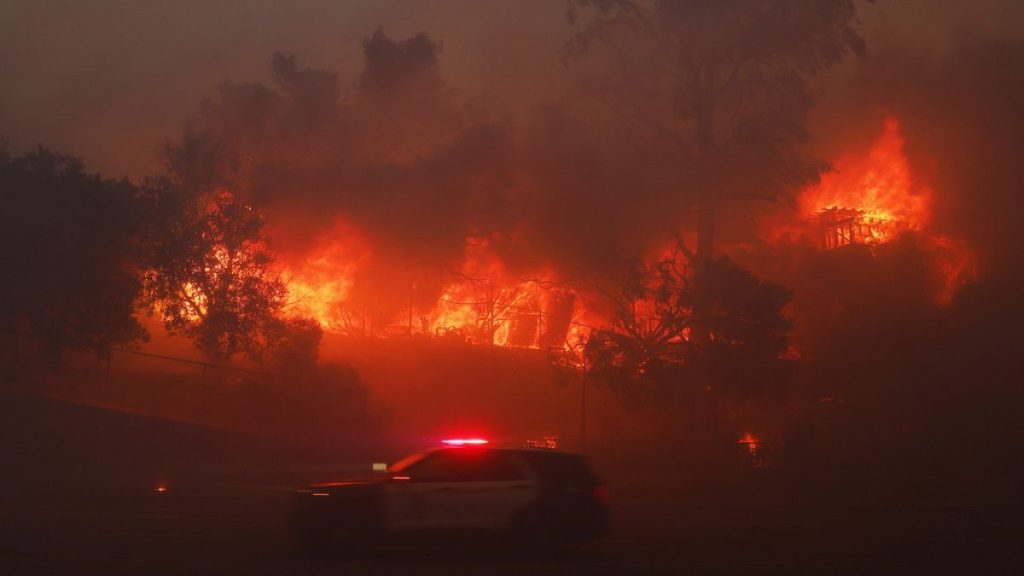The devastating wildfire that ignited on the morning of January 7th in Los Angeles County rapidly escalated into a major crisis, consuming 57 square kilometers within a mere 24 hours and prompting the evacuation of tens of thousands of residents. The inferno’s swift advance overwhelmed local infrastructure, creating chaotic scenes as residents desperately attempted to escape the encroaching flames. Roads quickly became gridlocked, forcing many to abandon their vehicles and seek safety on foot, adding another layer of complexity to the emergency response and highlighting the vulnerability of densely populated areas to fast-moving wildfires. The sheer scale and speed of the fire’s spread underscore the growing threat posed by such events, particularly in regions experiencing prolonged drought and extreme weather conditions.
The immediate aftermath of the fire’s eruption was characterized by widespread panic and confusion as residents grappled with the urgent need to evacuate. The sudden influx of vehicles onto evacuation routes quickly overwhelmed the capacity of the road network, leading to standstill traffic and trapping many individuals in their cars. This gridlock exacerbated the danger, preventing residents from reaching safety and hindering the access of emergency services to affected areas. The harrowing scenes of abandoned vehicles lining the clogged roads served as a stark testament to the ferocity and speed of the fire’s advance, forcing individuals to make difficult choices in the face of immediate danger. The breakdown of transportation infrastructure further compounded the challenges faced by first responders, limiting their ability to effectively combat the blaze and provide assistance to those in need.
As the fire continued its relentless march, the focus shifted to providing shelter and support to the displaced residents. Emergency shelters were rapidly established, offering temporary refuge to those who had lost their homes or were forced to evacuate. However, the sheer number of evacuees strained available resources, creating logistical challenges in providing adequate food, water, and medical care. The uncertainty surrounding the fire’s trajectory and the extent of the damage added to the anxieties of those seeking shelter, as they awaited news about the fate of their homes and communities. The unfolding crisis highlighted the critical need for robust evacuation plans and readily available resources to cope with the increasing frequency and intensity of wildfire events.
Beyond the immediate human impact, the wildfire also posed a significant threat to the surrounding environment and wildlife. The intense heat and flames consumed vast swathes of vegetation, destroying critical habitat and displacing countless animals. The smoke and ash released into the atmosphere significantly degraded air quality, posing respiratory risks to both humans and animals in the vicinity. Moreover, the destruction of vegetation left the scorched earth vulnerable to erosion and mudslides, increasing the risk of further environmental damage in the aftermath of the fire. The long-term ecological consequences of such large-scale wildfires are substantial, impacting biodiversity, water quality, and overall ecosystem health.
The firefighting efforts were hampered by the challenging terrain, strong winds, and dry conditions, which fueled the fire’s rapid spread. Firefighters from multiple agencies worked tirelessly to contain the blaze, utilizing ground crews, air tankers, and helicopters to combat the flames. However, the extreme conditions made it difficult to establish control lines, and the fire continued to expand, threatening nearby communities. The relentless battle against the inferno highlighted the courage and dedication of firefighters who risked their lives to protect lives and property. The incident also underscored the need for increased investment in firefighting resources and technologies to effectively manage the growing threat of wildfires.
The January 7th wildfire in Los Angeles County served as a stark reminder of the destructive power of nature and the increasing vulnerability of communities to the impacts of climate change. The rapid spread of the fire, the chaotic evacuations, and the widespread devastation underscored the urgent need for proactive measures to mitigate the risk of future wildfires. This includes implementing stricter building codes in fire-prone areas, creating defensible spaces around homes, and investing in early warning systems and improved firefighting capabilities. Furthermore, addressing the underlying causes of climate change, such as reducing greenhouse gas emissions, is crucial to minimizing the occurrence and intensity of such extreme weather events in the future. The event served as a wake-up call, emphasizing the importance of community preparedness, robust emergency response systems, and long-term strategies to adapt to the changing climate landscape.














